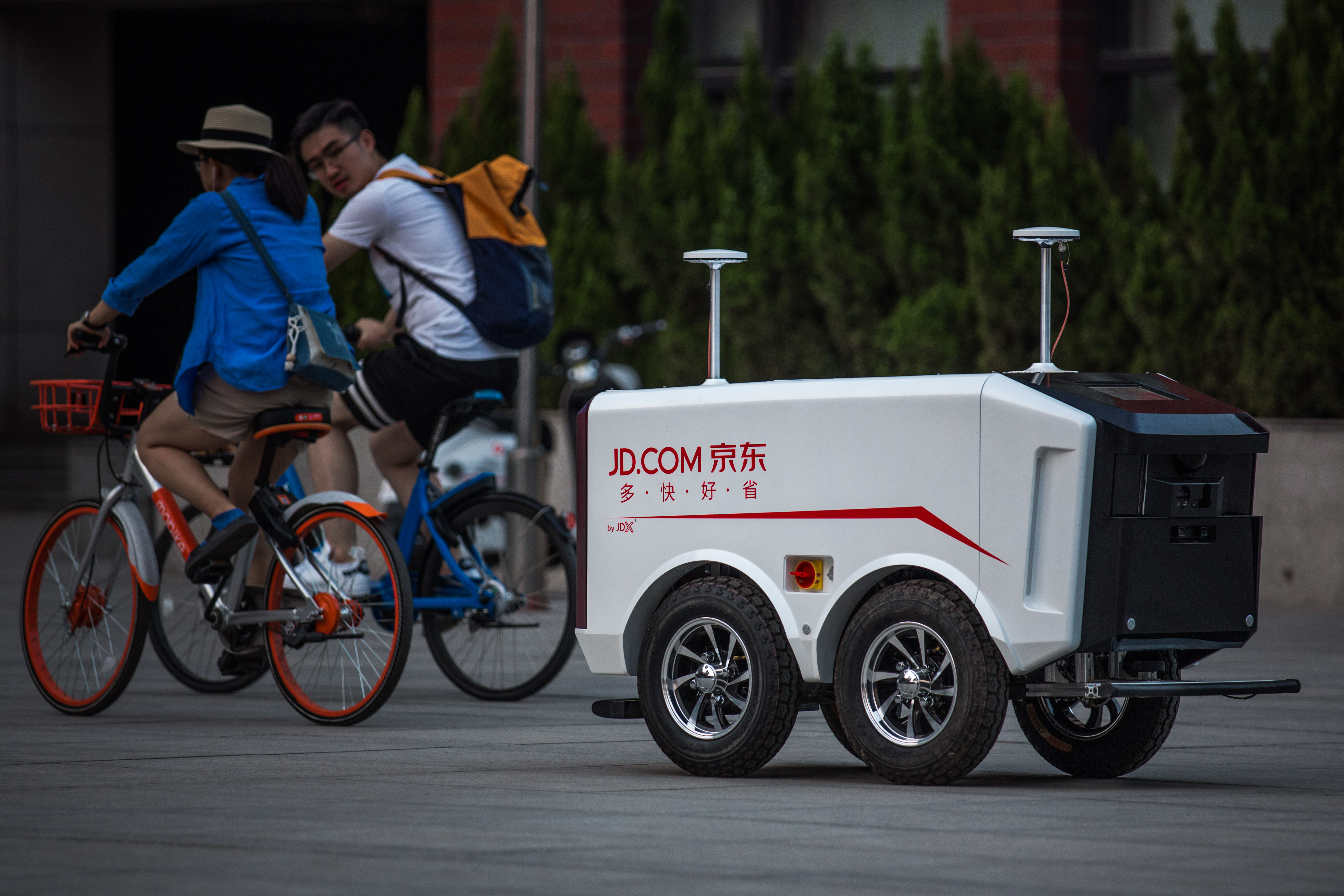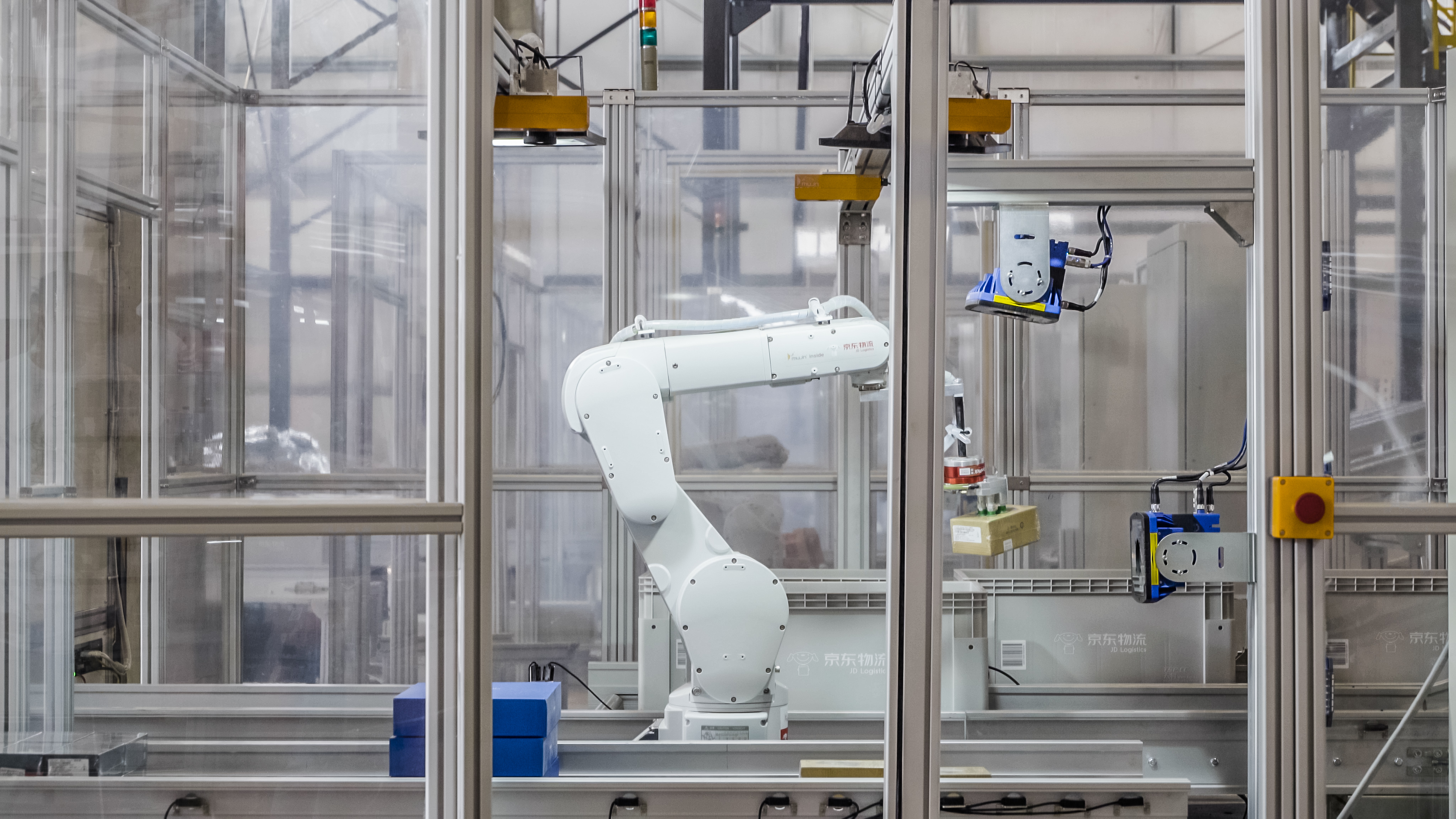There’s a new e-commerce giant in town, and it’s aiming for U.S. retailers.
But unlike other e-tail goliaths, this company, China’s JD.com, is here to help, rather than bury American merchants.
Self-described as China’s largest retailer, JD is bringing its two decades of logistical, supply chain and data-driven marketing prowess to CES 2019 to help give U.S. retailers a leg up in the e-tail and in-store stakes. Among the retail tech it will have in tow: delivery drones and robots, warehouse worker exoskeletons and AR platforms.
As JD tells it, the innovations were born of necessity. The company began as a brick-and-mortar consumer electronics retailer, founded in 1998 by CEO Richard Liu, and launched its online business in 2004 following a national SARS outbreak. But China had not yet built out its logistics infrastructure, compelling JD to develop its own nationwide distribution network.
Today that network includes more than 500 warehouses, many fully automated, and nearly 7,000 delivery stations, allowing JD to cover 99 percent of China’s population and deliver over 90 percent of its orders on the same or next day. To help bring that level of service to remote rural customers, JD has been deploying delivery drones for the past two years, and is presently trialing self-driving delivery vehicles on college campuses featuring onboard lockers, a spokesperson told TWICE.

JD is also employing AR to assist apparel shoppers with styling and fitting, and is developing IoT technology that will allow consumers to control their smart homes from their cars.
See: How AR/VR Can Create A ‘Wow’ Experience At Retail
Chief technology officer Chen Zhang said the company’s R&D efforts are in pursuit of its “Boundaryless Retail” vision, in which consumers can buy whatever they want, whenever and wherever they want it.
“As China’s largest retailer, JD is in the unique position of being able to research and develop, and commercially deploy, innovative technology that is shaping the future of shopping worldwide,” he said.

JD lays claim to largest-retailer status thanks to a 300 million-plus customer base, and further ranks itself as the world’s third-largest Internet company, based on 2017 revenue of $55.7 billion. (For its part, global B-to-C and B-to-B powerhouse Alibaba says it dwarfs those numbers, with 601 million active consumers and $768 billion in gross merchandise value last year for its Chinese retail marketplaces alone.)
JD’s reach and technological prowess have not gone unnoticed by the likes of Google and Walmart, each of which have partnered with, and invested in, the business. According to the South China Morning Post, Google bought a $550 million stake in JD last year and will help it extend its retail operations outside China, while Walmart sold its Chinese e-tail operations to the company in 2016 in exchange for a 10 percent ownership position, and last year led a $500 million fundraising for a JD affiliate that provides deliveries by motorbike in hundreds of Chinese cities and towns.
“As JD opens its technology up to other companies and industries, the features that we’ve already rolled out in China, from robotic warehouses to virtual shopping, are going to be enjoyed by consumers everywhere,” Zhang said, in a strategy he described as Retail as a Service, or RaaS.
JD will be showcasing its retail acumen at CES next month in a larger, more fully throttled return engagement in the South Hall of the Las Vegas Convention Center, booth 30329.
Register: Get Ready for CES by signing up for a webcast replay with TWICE, TechRadar and Tom’s Hardware.













